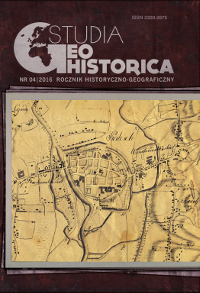Relacja Grzegorza Piramowicza o osuszaniu Bagien Pontyjskich za pontyfikatu Piusa VI
Grzegorz Piramowicz’s Account of Draining the Pontian Marshes during the Pontificate of Pope Pius VI
Author(s): Ewa M. ZiółekSubject(s): Economic history, 18th Century
Published by: Polskie Towarzystwo Historyczne
Keywords: osuszanie Błot Pontyjskich;pontyfikat Piusa VI;Grzegorz Piramowicz;draining the Pontian Marshes;Pius VI’s pontificate
Summary/Abstract: The article discusses a little known text by the prominent Polish 18th-c. educator Grzegorz Piramowicz, in which the author refers to the process of draining the Pontian Marshes during Pope Pius VI’s pontificate. Attempts to drain the region, located at the Tyrrhenian Sea, south of Rome, partially lying below sea level, were being made ever since the antiquity. The first surviving records are the Via Appia relics. Throughout the following centuries, subsequent Roman emperors and – from the Middle Ages onwards – popes were taking measures to drain this fertile land of Italia, acquire new areas for cultivation, and improve health standards so as to counter the recurring malaria epidemics. In 1775, as early as the first year of his pontificate, pope Pius VI started works which were aimed to fulfil this aim, digging up a new canal along the Via Appia (the so-called linea Pia). The canal was supposed to gather excess water from the marshes and direct them towards the sea. The plan also included setting up a port for Rome in Terracina, because originally the canal was designed to be floatable. The attempts, however, fell through, upset by the start of the French Revolution and the involvement of the Holy See in the conflict with France. Nevertheless, such a grand investment caused great interest across entire Europe. Among travellers and explorers who reached the site and described it was Grzegorz Piramowicz. He stayed in Italy between the years 1779–1780, and in 1780 he made the trip through partially uncovered and reconstructed Via Appia to Terracina, with the Pope’s chief engineer acting his personal guide, the Bolognese Gaetano Rappini. Piramowicz’s account is an extremely testimony not only of the Polish educator’s interest in the endeavour, but also of his erudition. He began with presenting the geography and economic significance of the region and its history, placing special emphasis on all previous attempts to drain the marshes, from the times of Claudius Appius, throughout the reigns of the Roman emperors, up until the times of Theodoric the Great. Piramowicz drew on ancient literature available to him (i.a., Plinius, Strabon, Dionysius of Halicarnassus, Titus Livius, Plutarch, Svetonius, also poets – Virgil, Horace), as well as on works by his contemporaries such as Inscriptiones antiquae... by Jan Gruter, Latium... by Athanasius Kircher, and quite likely, too: Vita Theo-dorici, regis Ostrogothorum... by Johannis Peringskiöld and Nova raccolta d’autori che trattano del moto dell’acque, vol. 6. Research query at many Italian libraries allowed him to describe efforts taken up to that time to drain the Pontian Marshes. In his description he briefly talks about works coordinated by popes beginning in the Middle Ages, whereas the main body of his text is devoted to efforts taken up by Pius VI and managed by Rappini. Piramowicz acquired all his information directly from the papal engineer, which is made manifest by the included meticulous measurement data referring to the linea Pia that was under construction then. Importantly, as a humanist, he did not attempt to enter into polemics with the technical aspects of the project, preferring rather to follow the argumentation put forth by papal engineers and counsellors. He does devote quite a lot of space to discussions of many antique monuments which were excavated at the construction site. These he described with connoisseurship and admiration (e.g. the ruins of ancient bathhouses), expressing concern over their future. He did not fail to mention, for instance, the necessity to build a museum where these artifacts could then be preserved and presented. Piramowicz’s account is concluded by a section of appendices from source excerpts – Theodoric the Great’s letters to the Roman Senate and to Cecilius Decius, as well as two inscriptions, one with a quote by the king of the Goths, and the other earlier, from the times of Trajan.
Journal: Studia Geohistorica
- Issue Year: 2016
- Issue No: 4
- Page Range: 51-65
- Page Count: 15
- Language: Polish

